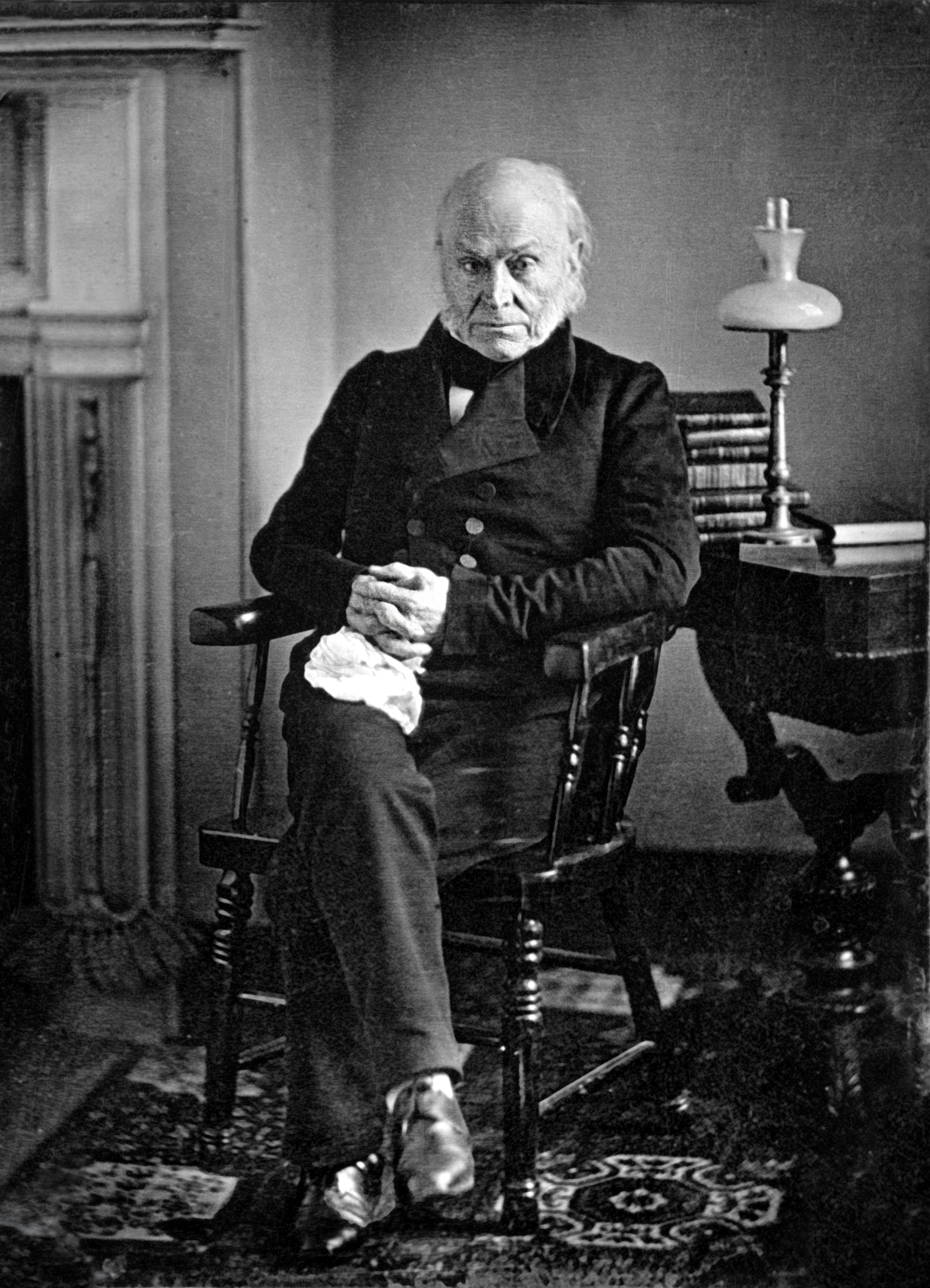On February 21, 1848, Congressman John Quincy Adams, representative of the Plymouth District of Massachusetts, collapsed from a stroke at his desk in the chamber of the House of Representatives. Adams was 80 years old and had endured a cerebral hemorrhage in 1846, which had left him frail and weakened. Now too ill to be moved farther, the fallen legislator was taken to an office just off the House chamber (now Statuary Hall), where he lingered for two days before dying there on February 23.
For seventeen years, this most unique of congressmen had exploited his combination of notoriety, fame, experience, talent, and unparalleled links to the Founding Fathers to fight against the institution of slavery, an institution that he feared might eventually destroy the Union.[1] For seven of those years, he struggled incessantly against the infamous “Gag Rule,” to restore and defend the right of members of Congress (and, by extension, their constituents) to openly discuss abolition petitions. He fought his final struggles against the annexation of Texas and against the Mexican War, because he saw within those issues more portents of national peril related to—again—slavery. Continue reading A Life Nobly Spent or Sacrificed: John Quincy Adams Confronts Slavery, 1819-1848
